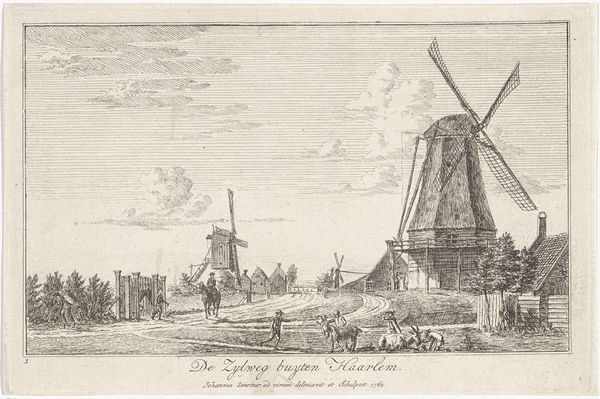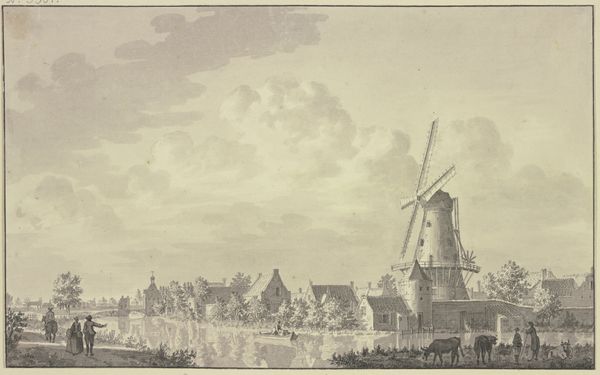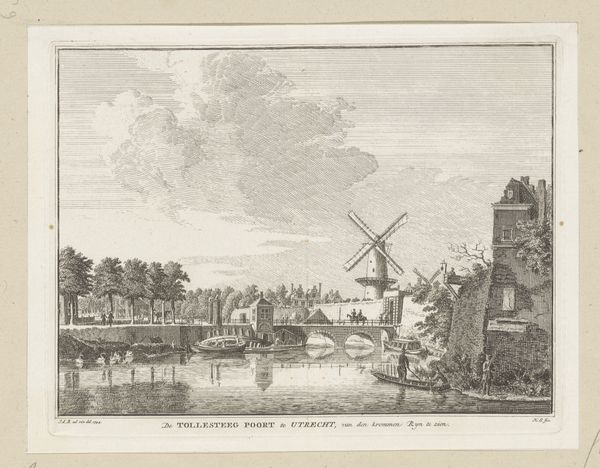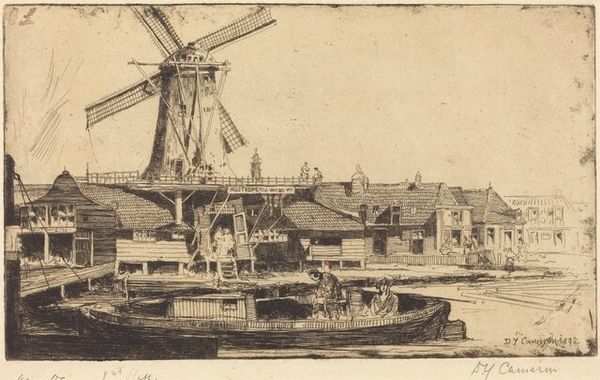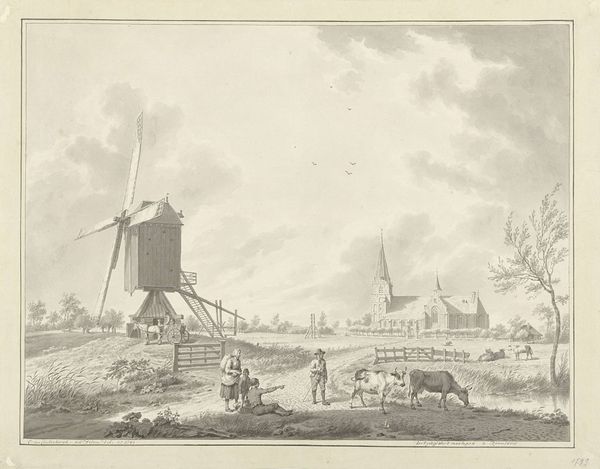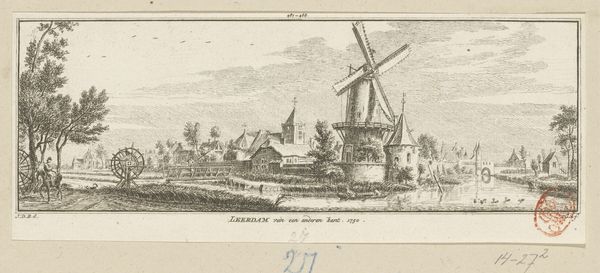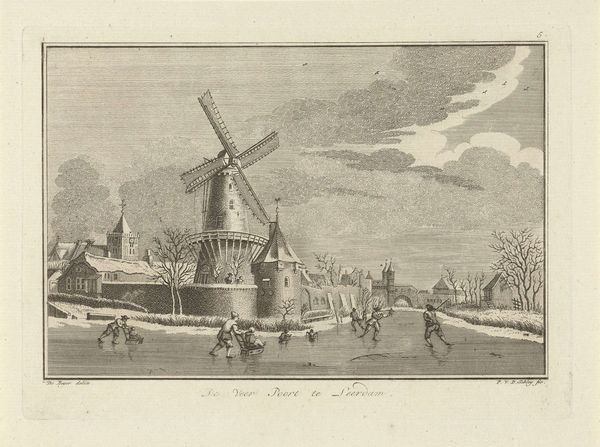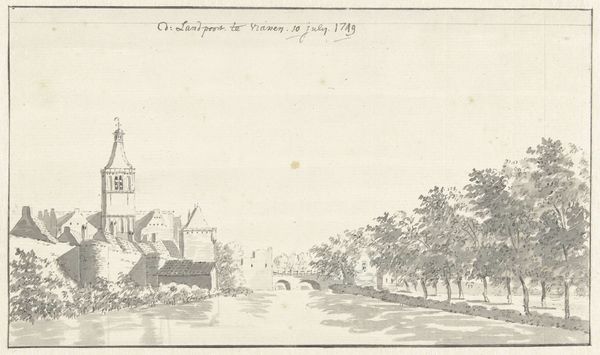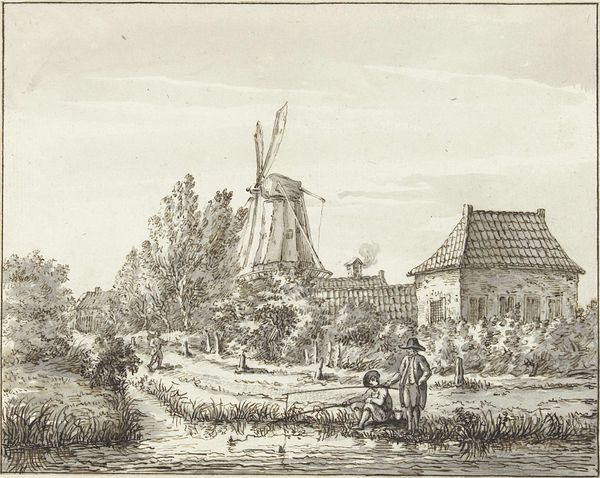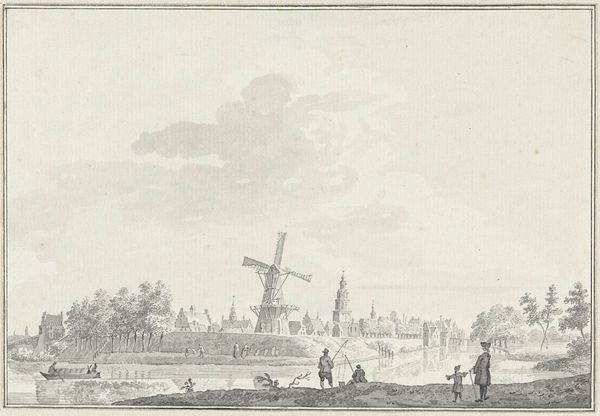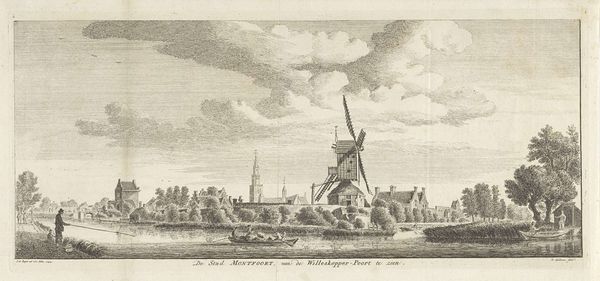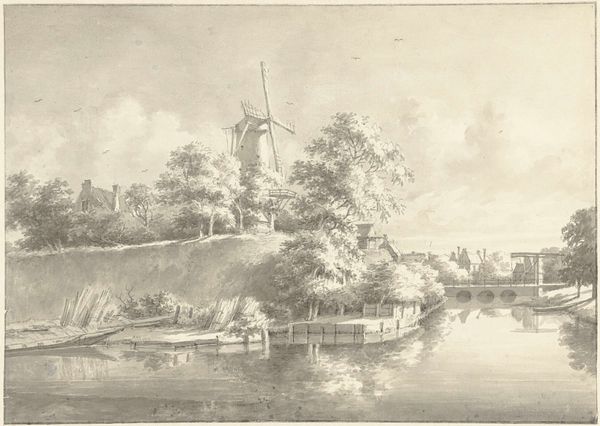
drawing, paper, ink
#
drawing
#
dutch-golden-age
#
pencil sketch
#
old engraving style
#
landscape
#
paper
#
ink
#
pen-ink sketch
#
sketchbook drawing
#
cityscape
#
genre-painting
Dimensions: height 135 mm, width 414 mm
Copyright: Rijks Museum: Open Domain
Paulus van Liender made this drawing of IJsselstein with pen and brush in the late 18th century. As a panoramic cityscape, it not only represents a place but evokes a sense of civic identity and pride. The cultural significance of this work lies in its detailed depiction of a Dutch town during the period known as the Dutch Golden Age, a time of economic prosperity and cultural flourishing. The windmill prominently featured in the image is not only a symbol of Dutch ingenuity in harnessing natural resources, but also reflects the economic activities of the time. We can see, too, the prominent church steeple, suggesting the importance of religion in the community's social fabric. Understanding art like this involves research into the conditions of its making, as well as analysis of the social values it embodies.
Comments
No comments
Be the first to comment and join the conversation on the ultimate creative platform.
